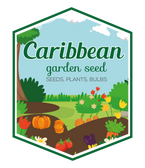
Seven Top Turnip Seeds ,HEIRLOOM ,Exelents For Turnip Greens !
- Get free shipping to lower 48 states on orders $54.95+ (Most Items), excluding live plants, plant bulbs, and black plastic nursery crate.
- Most orders are processed by the next day !
- Safe Seed Pledge
- Select your desired size and/or color from the available options.
(OP) HEIRLOOM. 40-50-days. Popular Southern variety grown for unsurpassed flavor of its nutritious greens. 16-22”H large, dark green, tasty leaves are best harvested when young and tender to use in salads as in the Southern classic “Wilted Turnip Salad.” Harvest full size for traditional cooked greens and stir-fries. Excellent freezing variety. Roots tend to be tough, woody and strong flavored – usually considered inedible. Also, a very nutritious cover crop and forage crop for a variety of animals. About 240,000 seeds/lb; 15,000 seeds/oz
Turnip greens are extremely easy to grow, especially in fall. As nights get longer and cooler, turnip greens become crisper and sweeter. Best of all, a new flush of tender leaves will grow after each picking, with plants remaining productive at least until the first hard freeze, and sometimes beyond.
They also grow in spring, but plant them early. Lengthening days trigger turnip plants to produce flowers and seeds instead of new leaves. Also, a few days of hot sun can make the greens taste strong and bitter in regions where spring gets hot quickly.
If you grow turnip green varieties designed for leaf production, the plants may also produce turnip roots, although not necessarily of high quality.
Soil, Planting, and Care
Turnip greens are easy to grow in any well-drained soil. Set out turnip green plants 2 to 4 weeks before the last frost in spring and from late August to October for a fall crop in most areas. In zones 9 and 10 they can be planted throughout fall and winter.
Like collards, kale, and other greens, turnip greens need to grow fast to produce nice, tender leaves. They aren’t too fussy about soil, growing well in a soil pH of 5.5 to 6.8, and doing okay even in poor sandy soil. Ideally, though, you should enrich the ground with compost or aged compost-enriched Miracle-Gro® Performance Organics™ All Purpose In-Ground Soil before setting out plants to improve soil texture and nutrition.
Set plants 6 inches apart, and do not try to thin or separate seedlings if there are several in the container. Turnip greens don’t mind growing in small clumps as long as each little group has ample elbow room. Although they are a variety that will make turnips, don’t expect great roots from crowded plants. They are sown with just the leaves in mind.
Turnip greens need steady water in order to thrive, so keep them watered during typically dry fall weather. Pull any weeds that appear in your turnip patch. For best results, feed them with a water-soluble fertilizer such as Miracle-Gro® Performance Organics™ All Purpose Plant Nutrition. This plant food works in harmony with In-Ground Soil to provide just the right nutrition to fuel more growth as you harvest leaves.
Harvest and Storage
The ideal time to begin eating turnip greens is when nighttime temperatures are in the 40s or cooler to bring out the sweetness in the greens. Greens that grow in hot weather can taste strong and bitter, especially to people who haven’t honed a taste for them. Turnip greens are a little more pungent than collards. You can pick leaves one at a time, or use a sharp knife to gather big handfuls. Plants that are cut back about 2 inches above the top of the root will grow a new set of tender leaves in only 2 to 3 weeks.
Be sure to wash greens thoroughly to remove any soil. The easiest way is to put the leaves in a very large bowl or clean bucket of water and swirl it around so that any soil falls to the bottom. Repeat until the leaves are clean. If you grow a bumper crop, keep a big galvanized tub expressly for this purpose. It is best to cut greens just before you cook them, but they will keep in a plastic bag in the fridge for a few days. Extras can be steamed and frozen. Any sizable turnip roots that form can be cooked along with the greens.
Saving Seven Top Turnip Seeds: Turnips will cross pollinate with other varieties of turnips, and should be isolated to ensure genetic purity. This vegetable must overwinter before producing seed. In warmer climates, a layer of mulch will be sufficient for protection. In colder climates, dig up the turnips; cut the tops to 1" and store them in damp sand at 33-40 degrees F until replanting in spring. The roots will send up flowering stalks. When the seed pods begin to turn brown, remove them before they shatter or dig up the entire plant and hang it upside down in a protected location to dry. Thresh the seed from the dry pods by crushing them. Store the seeds in a cool, dry place for up to 4 years.
Select your desired size and color from the available option
LET OUR CUSTOMER SPEAK FOR US

![[Seeds] - Caribbeangardenseed](http://caribbeangardenseed.com/cdn/shop/files/gift-card-gift-card-1_1024x1024_dfa857db-9150-4315-a362-7f0bb3fb9c47_60x28.png?v=1722895789)












